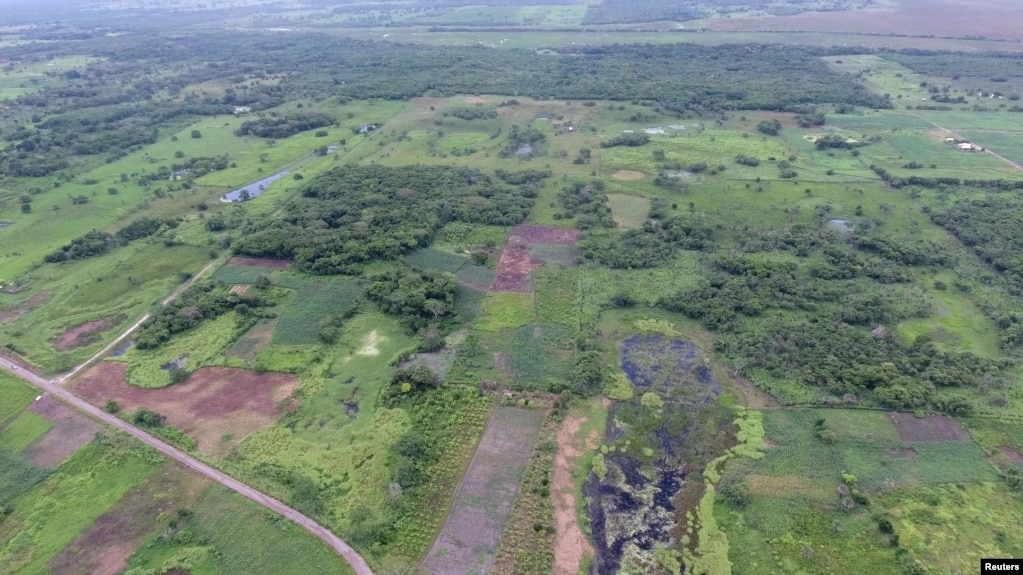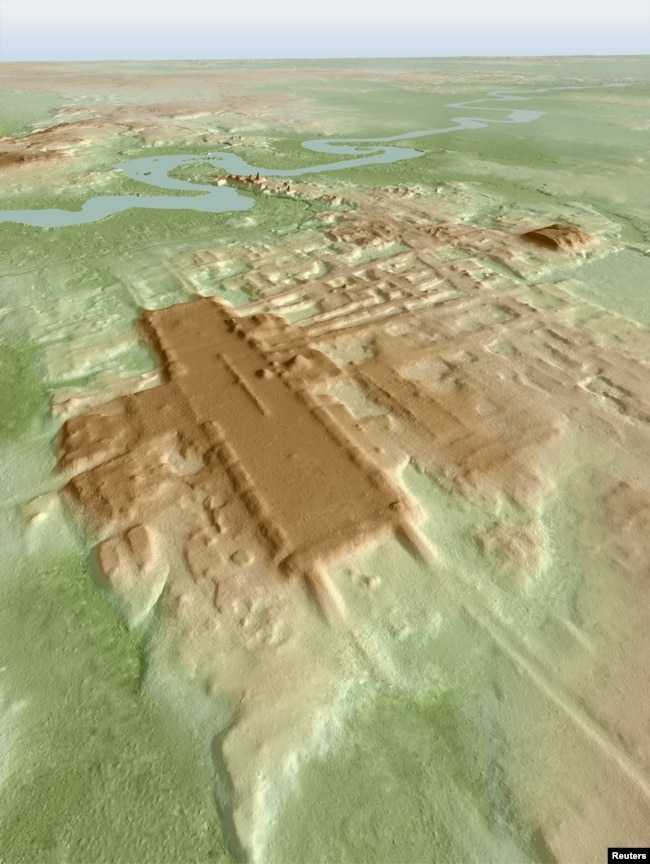マヤの謎
何かしら、古代ってわからないだけに魅力的!!!
ワクワク感が止まりませんね~。
そういえば。。。
「テオティワカン」!!20年も前になりますが行きました。
さあ、マヤ文明の最新発見に迫りましょう。
- 科学者たちがマヤ最大、最古の構造物を発見
- マヤ文明とは
- 欲張り!!マヤ文明が集まるメヒコへ
- 原文 Scientists Find Largest, Oldest-Known Mayan Structure
- Words in This Story
科学者たちがマヤ最大、最古の構造物を発見
Scientists Find Largest, Oldest-Known Mayan Structure
科学者たちは、古代マヤの人々によって建てられた最大かつ最も古くから知られている建造物を発見しました。
大きくて長方形のような形をしたこの建造物は、2,800年から3,000年前、現在のメキシコのタバスコ州に建設されました。
1500年後に建てられた大規模なマヤのピラミッドとは異なり、新たに発見されたこの建物は粘土と土で作られていたのです。おそらく儀式のために使用されたのだろう、と研究者は言います。
グアテマラの国境近くに建てられた構造物は、幅およそ400メートル、長さおよそ1400メートルと測定されました。高さは10〜15メートル。容積は、ギザのエジプトの大ピラミッドよりもさらに多い。
研究者たちは、権力者や裕福な人々の像の存在の兆候がなかったことに注目しました。このことは、この時代のマヤの文化がより平等であったことを示唆しています。
研究を主導したのは、アリゾナ大学の考古学者である猪股毅氏。調査結果は科学誌「ネイチャー」に掲載されました。
猪股氏によると、構造物が大きいので「自然の風景にしか見えません。しかし、ライダではその形がきれいに出ていますね。」。
ライダとは、Light Detection and Rangingの略で、距離を測る方法です。レーザーなどを使って上空を飛行させて集めた情報を使って、表面の形状を立体的に表現するものです。
現在は牛の放牧場に覆われている部分もあります。他の部分には木が生えています。
しかし、古代には特別なイベントに使われていた可能性が高いと猪股さんは言います。人々は、おそらく盛り上がった小道を歩き、長方形の構造物の中を歩いていたのでしょう。玉の斧のような象徴的なものを残していたといいます。
マヤ文明とは
紀元前1000年頃から16世紀頃まで、現在のメキシコのユカタン半島から、ベリーズ、グアテマラ、ホンジュラスといった国々のあたりで栄えた文明。
マヤ文明最大のピラミッド「チチェン・イッツァ」、世界最大の宗教都市遺跡「テオティワカン」はメキシコに、代表的遺跡であるティカルは、現在のグアテマラに。数学も高度で、20進法が用いられ、ゼロの概念もあったそうです。
詳しくは☟
欲張り!!マヤ文明が集まるメヒコへ
原文 Scientists Find Largest, Oldest-Known Mayan Structure
 An aerial view of the ancient Maya Aguada Fenix site in Mexico's Tabasco state, with causeways and reservoirs in the front and the Main Plateau in the back, is seen in this image released on June 3, 2020. (Takeshi Inomata/Handout via REUTERS)
An aerial view of the ancient Maya Aguada Fenix site in Mexico's Tabasco state, with causeways and reservoirs in the front and the Main Plateau in the back, is seen in this image released on June 3, 2020. (Takeshi Inomata/Handout via REUTERS)
Scientists have discovered the largest and oldest-known structure that was built by the ancient Mayan people.
Large and shaped like a rectangle, the structure was built between 2,800 and 3,000 years ago in what is now the Mexican state of Tabasco.
Unlike the large Mayan pyramids built some 1,500 years later, the newly discovered building was made with clay and earth. It was likely used for ceremonies, researchers say.
Built near the Guatemalan border, the structure measured nearly 400 meters wide and nearly 1,400 meters long. It stood between 10 and 15 meters high. It had more volume -- the amount of space -- than Egypt’s Great Pyramid of Giza.
Researchers noted that there were no signs of statues of powerful or wealthy people. This suggests Mayan culture may have had more equality during this period.
Takeshi Inomata, an archaeologist at the University of Arizona, led the research. The findings were published in the scientific journal Nature.
Inomata said that because the structure is so large, “it just looks like natural landscape. But its form comes out nicely in lidar,” he added.
Lidar is short for Light Detection and Ranging, a method for measuring distances. It uses a laser and other information collected by flying over an area to create three-dimensional information about a surface’s shape.
Some parts of the site are currently covered with cattle ranches. Other parts have trees.
But in ancient times, Inomata said, the structure was likely used for special events. People probably walked on raised paths and inside the rectangular structure. He said they left symbolic objects behind, such as jade axes.
_____________________________________________________________
Words in This Story
rectangle – n. an object with four straight sides and four right angles, and opposite sides are of equal length
pyramid – n. a large structure built especially in ancient Egypt that has a square base and four triangular sides which form a point at the top
clay – n. a sticky, fine-grained material
three-dimensional – adj. having length, width, and depth
cattle – n. large animals grown for their meat; cows
ranch – n. a large farm where cattle or other animals are raised
jade – n. a usually green stone that is used for jewelry
axe – n. a tool that usually has a heavy metal blade and a long handle and that is used for chopping wood
